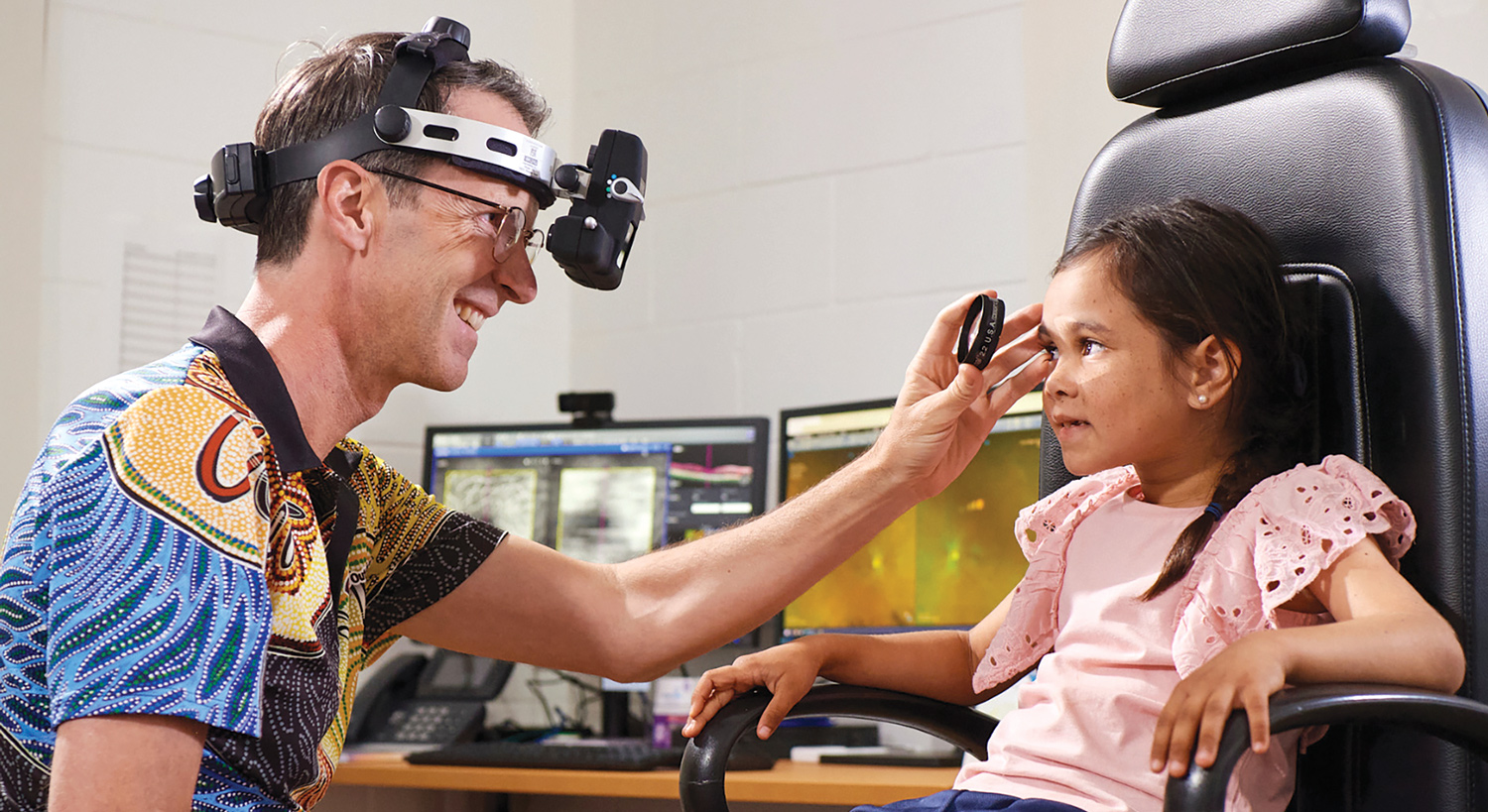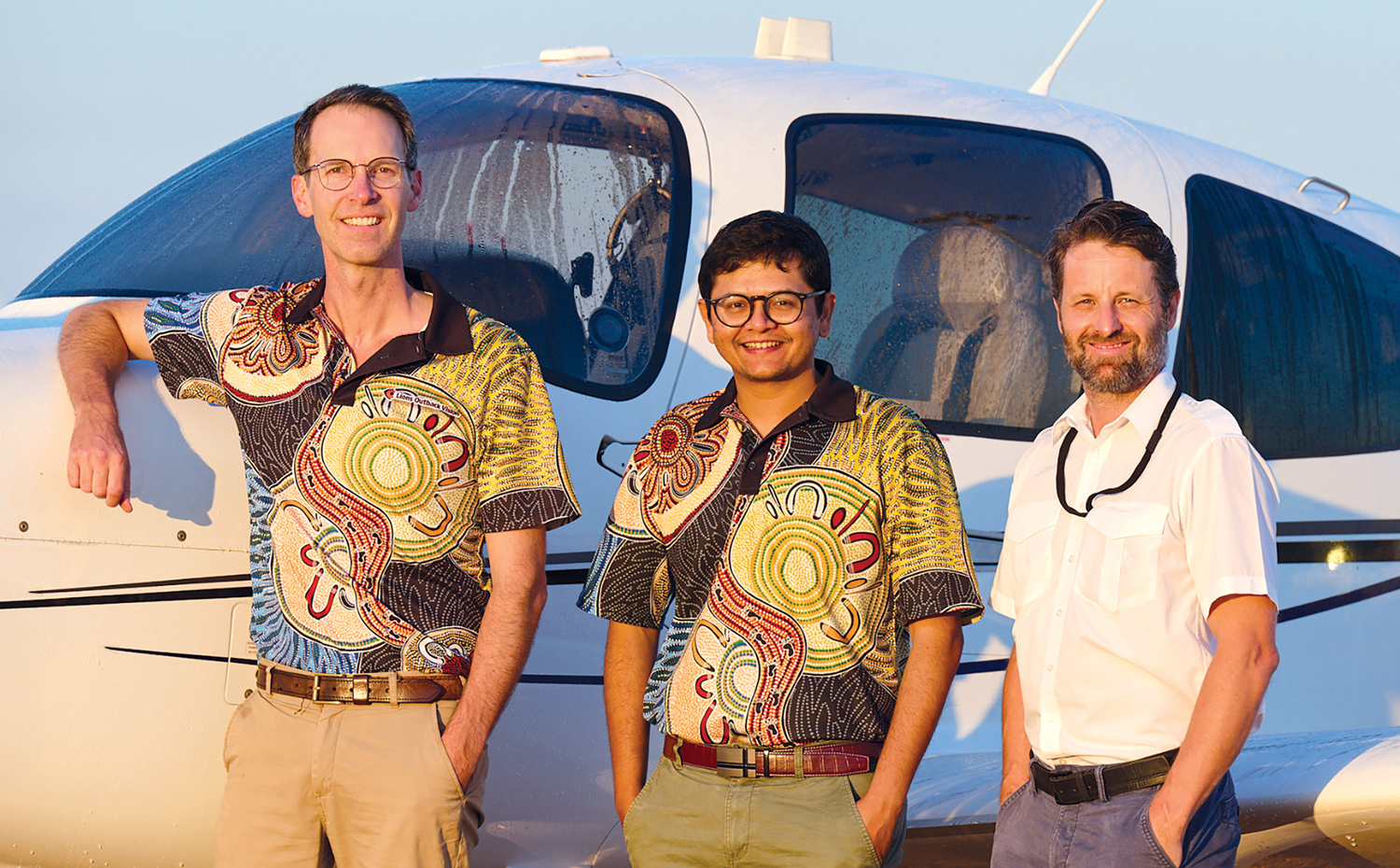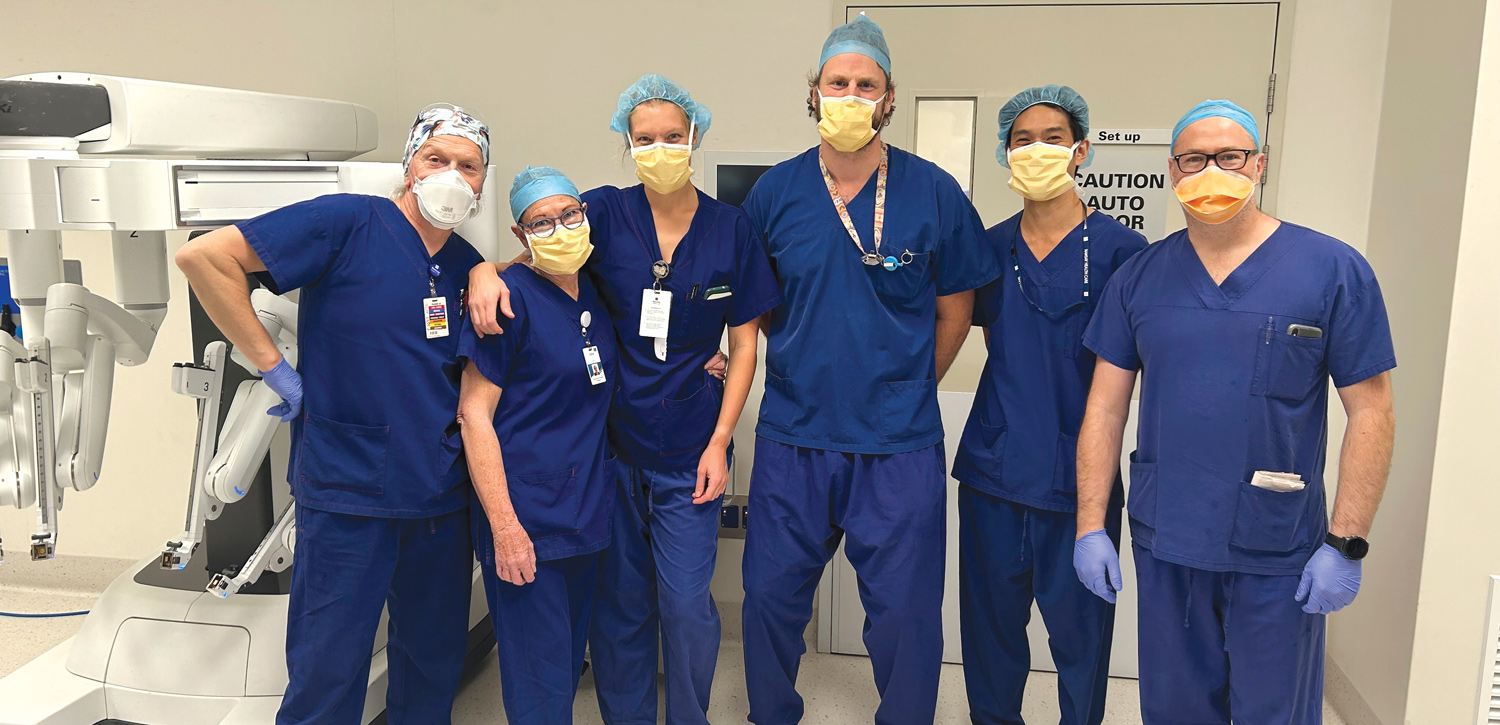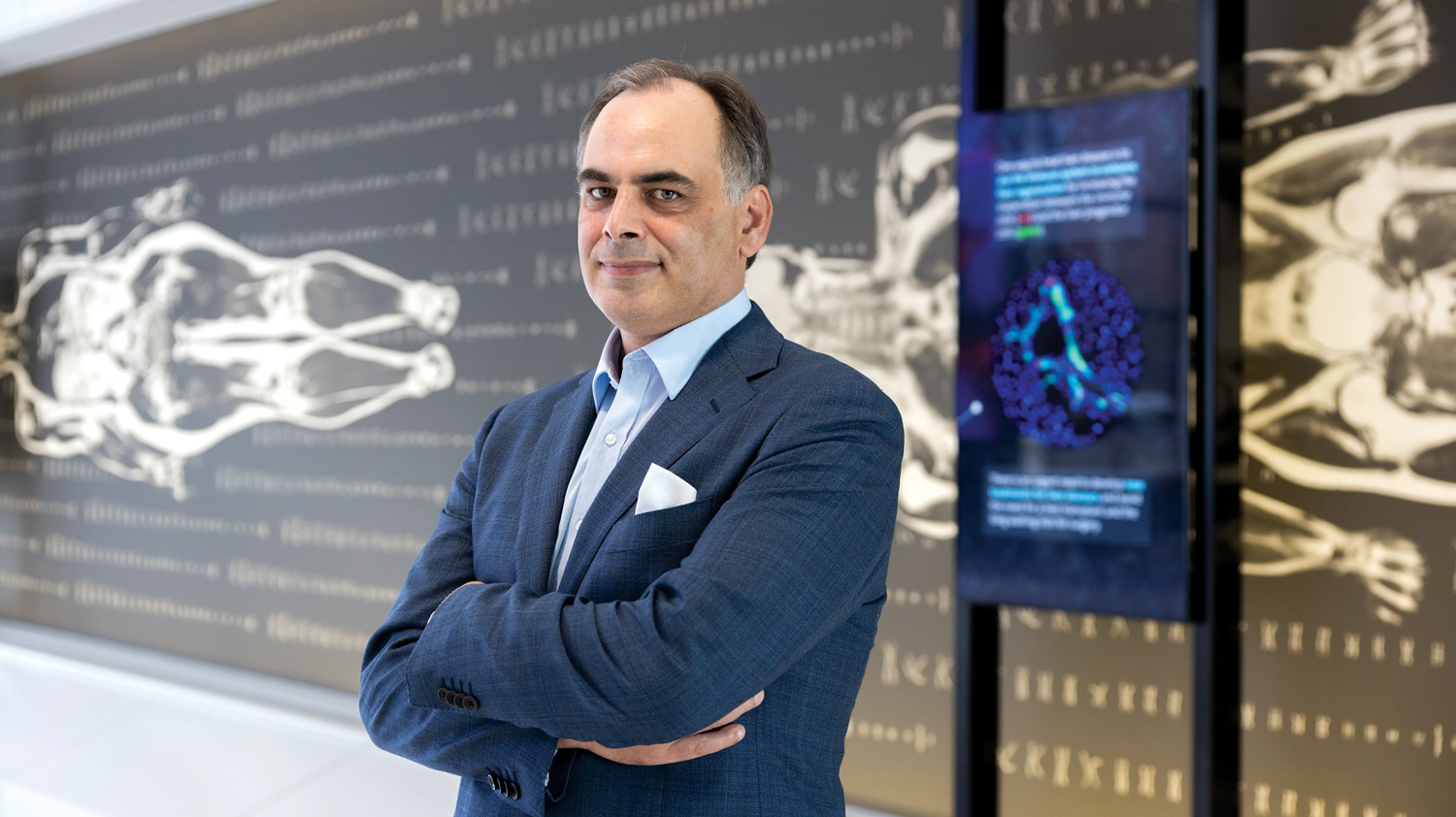 Eye hub a game-changer
Eye hub a game-changer
The Lions Outback Vision Kimberley Eye Hub in Broome has recently expanded, marking significant progress in treating eye disease in the Kimberley and Pilbara.
The hub is aimed at providing greater equity of eye health services in remote, regional and vulnerable Aboriginal communities.
 It provides permanent specialised eye health services in Broome and outreach to 20 communities and five regional towns across the Kimberley. It includes a full-service eye clinic with state-of-the-art diagnostic equipment, education and training spaces, a café and facilities for multidisciplinary use by visiting specialists.
It provides permanent specialised eye health services in Broome and outreach to 20 communities and five regional towns across the Kimberley. It includes a full-service eye clinic with state-of-the-art diagnostic equipment, education and training spaces, a café and facilities for multidisciplinary use by visiting specialists.
Staffing includes three resident doctors and two optometrists.
The McCusker Director of Lions Outback Vision, Associate Professor Angus Turner, said the hub enabled patients to be treated closer to home, which was crucial in dealing with the challenges of remote eye health.
“People in isolated places like the North West have more blindness and complications from eye disease than in other places,” he said. “In particular, Aboriginal and Torres Strait Islander people have more than three times the rates of blindness and 14 times the rates of vision loss from diabetes.”
About 11% of the North-West Aboriginal population are vision-impaired or blind, and 35% of this group have never had an eye examination.

Medical biz is booming
A new report by the Melbourne Institute shows profits of medical businesses are growing faster than businesses in other industries. Despite rising costs during the COVID pandemic, profits have bounced back, especially for non-GP specialists.
Led by Professor Anthony Scott, the report shows GP and non-GP specialist medical businesses saw profits rise by an average of 2.4% a year for GPs and 5.4% a year for non-GP specialists before the pandemic.
It found that while profits were increasing, so were expenses, which could be leading more medical entities to consolidate. The total number of doctors in solo private practices has fallen between 2013 and 2020, while the number in group private practices has increased.
The report includes new national data from the peak of the pandemic when medical businesses had a sudden increase in costs as they adapted to COVID settings. Though profits initially fell during the pandemic, they have since increased again because of the pent-up demand, especially for non-GP specialists.

Robotic hernia ops
Hollywood Private Hospital upper gastrointestinal surgeon Laurence Webber and his team have performed the first robotic ventral hernia repair in WA, using the DaVinci Xi Robot.
Robotic hernia surgery allows more patients to be treated with a minimally invasive approach, with potential benefits including less pain, shorter length of hospital stay and fewer complications.
The surgery in early October was a significant milestone for Dr Webber’s team, which included general surgeon Dr Josh Salim and anaesthetist Dr Ted Velzeboer.
A ventral hernia occurs when abdominal contents protrude through a weak point of the abdominal wall. Symptoms include pain or a lump in the abdomen.
While hernias occur in men and women, they are more common in men. About one man in every 20 will develop a hernia at some point in his life.
Hollywood was the first hospital in WA to purchase the da Vinci Xi Surgical System. The technology offers advanced robotic, computer and optical capabilities that assist a surgeon.
Costly menopause
Menopause comes at a price, and it’s not just physical costs like hot sweats and fatigue, new figures reveal.
The Australian Institute of Superannuation Trustees estimates menopause costs women more than $17 billion a year in lost earnings in wages and superannuation and has called on the Federal Government to investigate the role it plays in contributing to the superannuation gender gap.
AIST, the peak body for the $1.6 trillion profit-to-member super sector, said recent British studies indicated up to a quarter of menopausal women experienced debilitating symptoms leading to long-term absences from work or forcing them into early retirement.
This aligned with data in Australia showing 26.8% of working women retired under the age of 55.
Women retire with 40% less super than men on average because they earn less and spend more time out of the workforce caring for children and other family members.
AIST said women aged 45 to 54 retired on average at 52, which was earlier than planned (59 years) and earlier than men (59.5 years), with 44.9% of citing “own sickness, injury or disability” for leaving their last job.
It pointed to a health crisis in under 55-year-old women driving retirement well ahead of what was intended.
The average age of menopause is 51, with many women experiencing symptoms for five to 10 years.
Study on skin tears a winner
A study by Silverchain on the effectiveness of a skin tear assessment tool has won the original research article award in the Coloplast Biatain Literary Awards.
The study, published in the Journal of Wound Practice and Research, was undertaken by Dr Robyn Rayner, Professor Keryln Carville, Joanna Smith and Cate Maguire.
It examined healing times and dressing costs for older adults with skin tears using the Skin Tear Audit Research classification that was developed by Silverchain and Curtin University in 2007.
Skin tears are the most common wounds found among older people and are often associated with knocks or falls.
It is the first study to look at the implications of using a skin tear classification tool for determining healing times and dressing costs for treatment. It reviewed more than 2100 skin tears in Silverchain clients aged 65 years and older.
Professor Carville said the study would help make wound care more effective as well as provide greater transparency of healing times and treatment costs.
“The STAR classification has demonstrated to be an effective tool for assessing skin tears and for providing a basis for risk stratification that determines which skin tears are likely to be more costly in terms of healing times and treatments,” she said.

The eyes and ears of research
Scientists at the Lions Eye Institute and Ear Science Institute Australia are moving closer to having personalised therapies for Usher syndrome, the most common form of inherited deaf-blindness, thanks to a Medical Research Future Fund grant.
Lead chief investigator Dr Samuel McLenachan, who runs the ocular tissue engineering laboratory at LEI, said a coordinated approach would allow them to test and develop more treatments for Usher syndrome.
Usher syndrome robs children of their two main senses, hearing and sight. Although some hearing can be restored with a cochlear implant, once a child loses their vision it cannot be restored. There are very few treatments to slow this vision loss, and there is no cure.
“Children diagnosed with Usher syndrome may only have a small window of time before their eyesight starts to deteriorate, and once vision is lost, it cannot be restored,” Dr McLenachan said.
As part of the project, scientists will create retinal and inner ear organoids, which replicate the eye and ear tissue of a person with Usher syndrome.
They will use these organoids to test a range of drug and gene therapy treatments being developed by leading research groups at the University of WA, and Curtin and Murdoch universities. The pre-clinical testing would help identify safe and effective treatments that could be progressed into human clinical trials.
No fall in rate of falls
Falls and their related injuries continue to be a significant public health issue in WA, ranking as the leading cause of injury hospitalisations.
Injury Matters has released its 2022 Western Australian Falls Report, which shows that one person died every 25 hours in 2019, was hospitalised every 17 minutes in 2020 and attended the emergency department every 13 minutes in 2020 due to a falls-related injury.
The 31,708 falls-related hospitalisations in 2020 resulted in 239,669 hospital bed days and cost an estimated $286 million. On average 7.6 days was spent in hospital per falls-related admission in 2020.
On average 84 falls incidents a day – or more than 30,000 cases – required an ambulance attendance in 2020.
Letter to the Editor
Dear Editor,
I read with interest your editorial on GPs, our national treasures in the September edition of Medical Forum.
I am of the view that many senior doctors with many years of valuable medical expertise are giving up because of the unreasonable requirements of the Medical Board for them to renew registration to continue part-time practice.
The Medical Board requires full medical registration and medical insurance with increasing demands for continuing medical education, including recency of practice requirements that makes it very difficult for part-timers, so many of my colleagues decide to give up and retire.
The Australian Senior Active Doctors Association (ASADA) has been appealing to the Medical Board to relax some of the onerous requirements but has had little success.
Unless this problem is addressed, the number of doctors retiring will progressively rise and this is likely to be substantial, as I understand at least 30% of doctors are of retiring age.
Dr Kar Chan Wan
Consultant Occupational Physician

